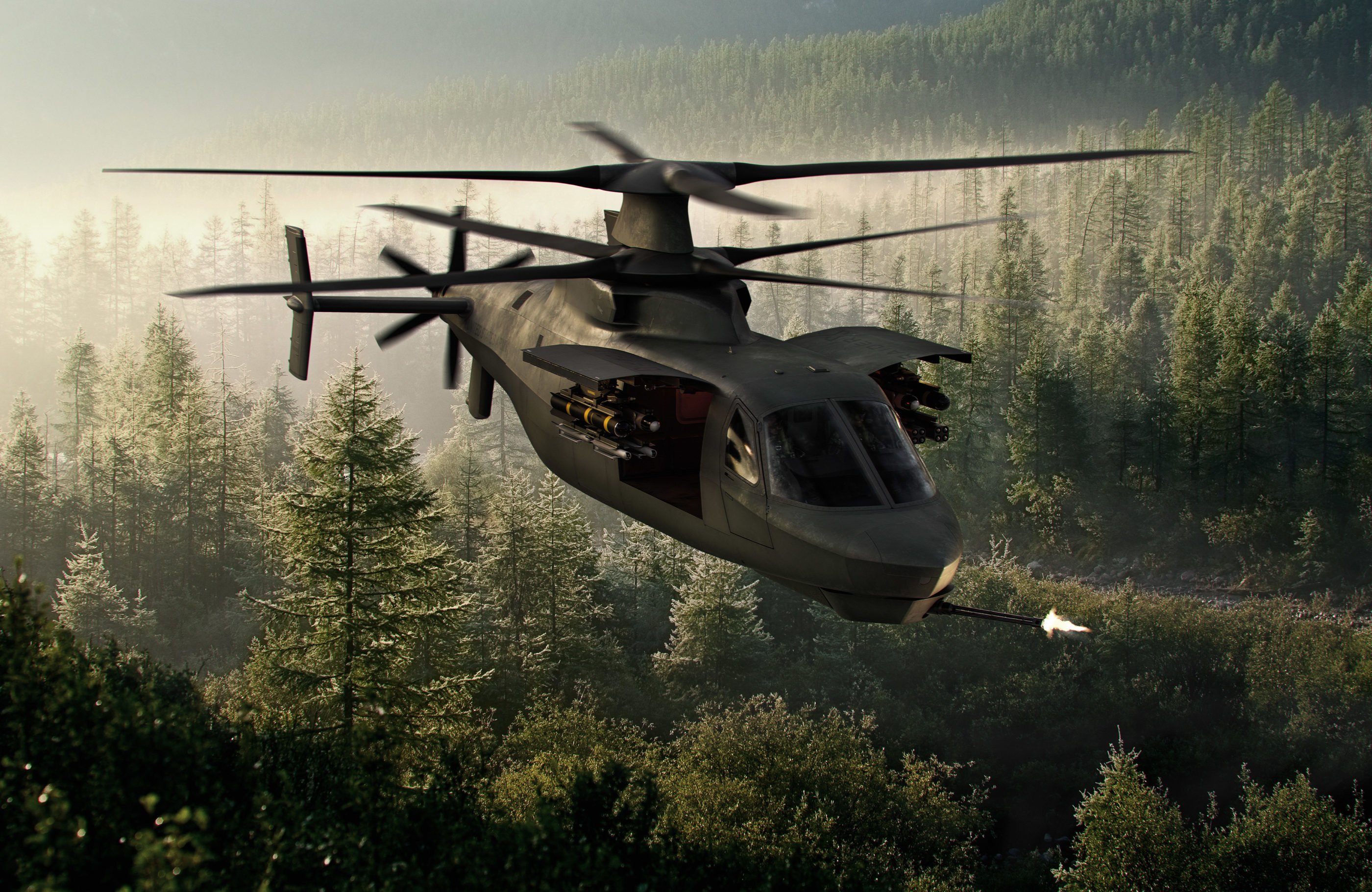Sikorsky’s Raider X prototype, the company’s pitch for the U.S. Army Future Attack Recon Aircraft (FARA), is more than 60 percent complete.
The announcement places both FARA entrants well over the half-built mark on the way to a competitive flyoff near the end of 2022. Army aviation officials are pleased with the speed at which industry has refined the designs for the aircraft that will assume the armed scout role vacated when the OH-58D Kiowa Warrior was retired.

“The FARA prototypes are well over 60 percent built and that’s a little over a two-year flash-to-bang from the first appropriated dollar,” Brig. Gen. Walter Rugen, head of Future Vertical Lift at Army Futures Command, said Oct. 12 at the Association of the U.S. Army’s annual conference in Washington, D.C. “I would challenge anyone to go find a program that has gone that fast.”
Sikorsky’s sole competition for FARA is Bell, which had completed about half of its 360 Invictus prototype in August. The rotorcraft configurations competing to meet the Army’s requirements of speed — 180 knots cruise — range and agility, could hardly be more different.
Invictus is a tandem-cockpit conventional helicopter with a single main rotor and open tail rotor, a redesign away from a shrouded tail that occurred mid-stream but which Bell says will not hamper its ability to complete the aircraft within a year.
Based on Sikorsky’s X2 technology, Raider X is a compound-coaxial helicopter with counter-spinning rigid rotors and an aft variable-pitch pusher prop that provides both acceleration and deceleration. It features a side-by-side cockpit and a weapons bay with stowable launch platforms aft of the cockpit that can be reconfigured to carry troops.
Sikorsky has not released a photo of the Raider X under construction and had previously declined to confirm how far along the aircraft was. Rugen dropped the news during an Army aviation press conference, after which Sikorsky released a statement confirming Raider X had reached the 60 percent mark.

Raider X is 20 percent larger than the still-flying S-97 Raider, from which it is directly descended. Where the S-97 has a 34-foot (10.4-meter) main rotor diameter and is built around a GE YT706 engine, the X version will have a 39-foot (11.9-meter) main rotor diameter and be built to accept the General Electric T901 engine the Army has prescribed for FARA. Raider X increases the weight of the aircraft from about 12,000 pounds to 14,000 pounds (5,445 to 6,350 kilograms).
In the six years since its first flight, the S-97 has racked up more than 100 hours of flight time on 88 flights with another 137 hours of ground runs. Every envelope-expansion flight test is first performed in the Systems Integration Lab, a ground-based test asset with cockpit and avionics components identical to the aircraft. The rotor system and drivetrain has been tested through another 365 hours on the transmission systems test bed, according to Sikorsky.
Raider has already flown 207 knots in level flight and 215 in a shallow dive. The larger, more powerful Raider X should be able to fly faster than that. Sikorsky rolled the data collected from Raider into the design of Raider X.
“Our team is working hand-in-hand with the Army, and we continue to make great progress,” said Jay Macklin, Sikorsky’s Future Vertical Lift business development director. “We are leveraging a very robust – and ongoing – FARA flight test program with our S-97 Raider tech demonstrator, and production on Raider X is over 60 percent complete. It’s the success of flight test program that has allowed our team to optimize and mature our Raider X design.”
In a similar vein, the Sikorsky-Boeing team are rolling flight test data from the SB>1 Defiant — Raider’s much larger cousin — into the design of Defiant X, their pitch for the Army’s Future Long Range Assault Aircraft (FLRAA), which should eventually replace the UH-60 Black Hawk.








